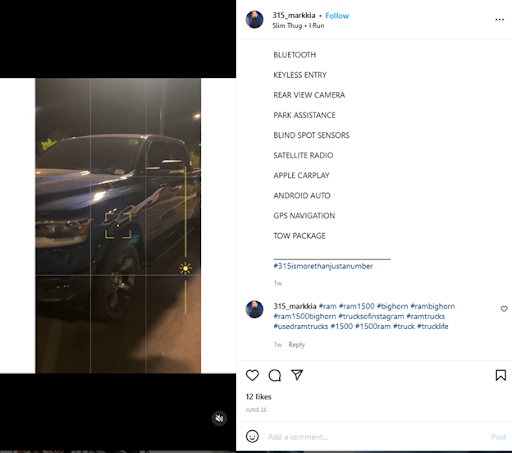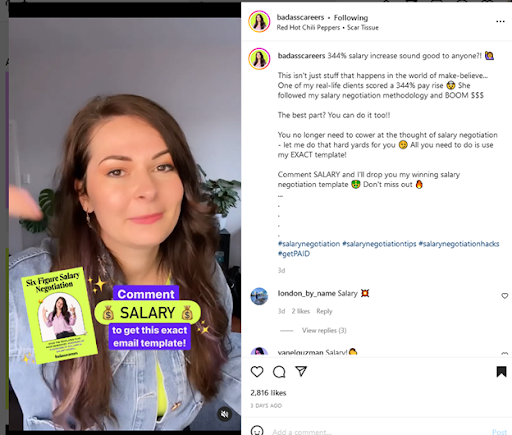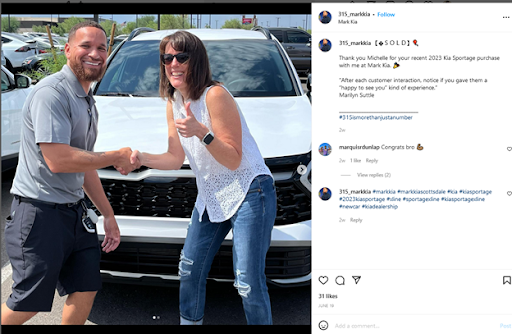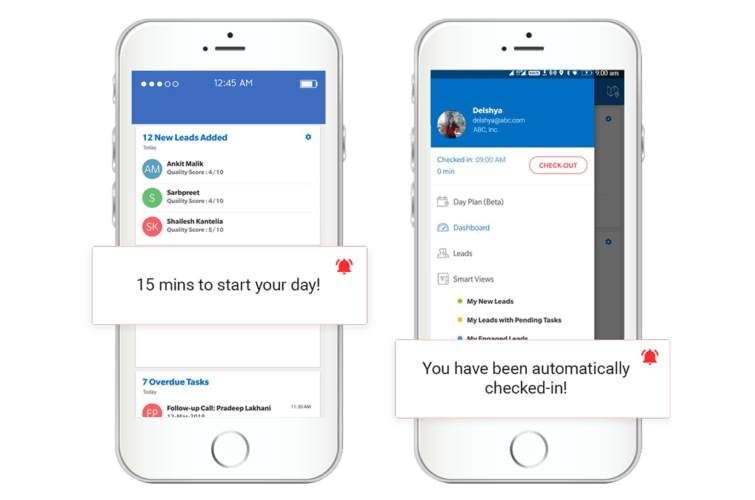Do you want to be a top-performing field sales representative?
We have the perfect guide for you! This article is packed with tips and strategies from industry experts so you can start crushing your targets today.
You’ll learn how to streamline your schedule, build relationships with clients, and close more deals.
Keep reading to know the tricks of the trade.
1. Nurture Your Clients
After reading this section’s title, you may object to client nurturing being the first in this list of steps to become a top-performing field sales representative. Shouldn’t you have at least some prospects first?
Technically yes. However, client nurturing is a mindset more than a tool you can use down the line to sell. It’s what dictates your entire personality, relationships, and communication strategy.
Remember: Client nurturing is not just about keeping your existing customers; it’s about onboarding new ones too.
Answering people’s needs and showing you care about their experience is the only way to get more qualified leads. Otherwise, your endeavors seem salesy, and people’s natural tendency is to push you away.
That means you have to:
- Identify different customers’ needs.
- Keep in contact with those potential or existing customers.
- Be one step ahead of their thought process or possible objections.
Basically, you have to show your personal interest in each client and build close relationships. That’s how potential customers convert, and existing ones become loyal.
However, you’ll need the right strategy and tools for client nurturing.
First, you need the right software to help you keep track of your customers’ details – from their names, email addresses and business industry to less tangible insights. For example, you must know if one prospect likes reviewing the numbers with you after drinking their morning coffee while another wants to discuss their kids’ school first.
Automation can help you keep that personal touch because:
- You remember each prospect’s particularities.
- You can craft convincing messages.
- You keep track of times and dates.
- You can review what worked and what didn’t to adjust your strategy.
Of course, you need some strategy in the first place. That brings us to the following point.
2. Set Goals and Messages
Strategy is about establishing a goal first. That’s important to remember because many sales reps imagine their sole goal should be selling (being their job title and all that).
However, there are many other steps to closing a deal, such as:
- Reviewing and understanding your prospects. You need a database of your prospects and existing clients. This database should be as complete as possible, amassing all the relevant details for your line of work.
- Devising customized messages for each customer. Remember that prospects want your attention; they don’t want to feel like another name you tick off your list.
- Pitching and re-pitching your ideas. You probably won’t close too many deals from the first tries, and that’s perfectly natural. However, you should strive to keep in close contact with your prospects, coming back to them with new ideas. But we’ll talk more about that in the fourth section.
Each of these goals has subordinated objectives that you’ll have to outline as part of your strategy, including a timeline, tools, and budget.
Pro tips:
1. You need a thorough plan for your messages. It’s essential not to sound salesy and show care for your prospects – sure. They should be able to trust you like a friend, and you should be honest with them. But you still have a business relationship, not a friendship. Therefore:
- You need to back each message on objective data and thorough analysis.
- You want to pick your words carefully and review your results daily, weekly, and monthly.
- Then, you have to adapt that strategy according to the results of your evaluation.
2. You want the right channels. Messages are important, but the medium makes a huge difference even if the same audience uses it. Take this example:
Conquer Driving is a driving school in the UK with (currently) 417,000 subscribers on YouTube. Richard Fanders, the instructor running this channel, explains everyday driving situations and mistakes throughout his videos. From driving on narrow streets to parallel parking, clutch control, and roundabouts – he has it all.
These videos have a high engagement, with hundreds of thousands of views per clip and hundreds of comments.
This evergreen content has helped Richard Fanders gain new customers and establish his reputation worldwide.
Note: Although using social media isn’t technically being on the field, it can help your face-to-face communication because you’re building expertise—more about that in section #3.
Now back to Conquer Driving.
The same school has just 818 followers (at the time of this writing) on Facebook and fewer than ten likes per post. The comments are practically missing, and there’s no engagement or communication between members like on YouTube.
Why does that happen?
One argument could be that the Facebook page is perceived as more salesy. After all, the posts there are meant to promote the school and the YouTube channel. While some posts try to elicit engagement (e.g., through some polls or questions), followers aren’t motivated enough.
So although Facebook is a platform that fosters community, bringing people together through groups with the same interests, that’s not enough.
Conquer Driving has more engagement on YouTube because the driving videos bring value.
That’s an essential lesson: bringing value to your prospects will build your expertise and credibility, fostering trust. As such, you’ll be top of their mind when they decide to purchase.
Messages pro tips:
- Focus on benefits.
- Create free guides, editorials, or videos depending on your customers’ needs.
- Show them results and comparisons with other campaigns or tools.
3. Leverage Social Media
Social media is crucial in establishing credibility, know-how, and relationships, so you should leverage it wisely.
Everyone is on social media now, but that doesn’t mean using it for your business goals is easy.
Here’s what you’ll have to keep in mind:
Posting
Don’t start following others on social media, and don’t promote your account until you’ve done one thing:
Make at least nine posts and publish them simultaneously. Otherwise, your page will appear empty and unprofessional.
What should these posts – and others – look like?
Your focus should be on quality and not quantity. So, don’t flood your prospects’ feeds with cat pictures, although they’re adorable. Instead, establish yourself as an indispensable expert in your field by focusing on your audience’s needs:
- Insights about the industry
- Advice with links to detailed articles
- Tips on how to use your products to advance their business
- Announcements
- Behind-the-scenes posts that showcase your corporate culture
- Events
- Conferences
- Product launches
- Mini-commercials
- Product tutorials
Pro tip: Post when the audience is active because you want them to see and
engage with your news.
And don’t forget to craft stunning social media images. You can check out online design tools to add filters and effects to your images and make their colors pop.
Hashtags
Always use hashtags to:
- Promote your business’s content and events.
- Find other companies that are potentially interested in your products/services.
- Find influencers.
- See what your competitors are doing.
- Monitor a specific campaign’s results.
You can also use a hashtag that makes you part of a community. This hashtag also makes your post more noticeable.
Here’s one example from a Kia sales representative:

#trucksofinstagram and #trucklife have a lot of symbolic power because they define a lifestyle. Owning a truck is more than having a vehicle that helps you move around; it’s about power, freedom, and the American way of life.
The other hashtags are wisely chosen, too, narrowing down the type of truck promoted through this post: a Ram 15 Bighorn.
The engagement is reasonable, too: 12 likes out of 122 followers (at the time of this writing). However, things could get better for this particular sales rep if he would focus on:
Engagement
Stay active on social media by liking and following other users. Make sure these users are relevant to your business, so choose:
- Potential and existing customers
- Competitors
- Other salespeople
- Best influencers in your niche
Engaging with these profiles will bring you more visibility. If you’re posting quality comments focusing on these people’s needs, you’ll establish your expertise and be on top of their minds.
As a result, you’ll gain more clients and more recommendations.
You should also engage with these accounts on your profile page. That means you should like and reply to everyone’s comments – even if you get hundreds of those.
Replying to people or businesses is an excellent way to establish your values and contour your personality.
Pro tip: Negative comments and queries are an immense opportunity, so don’t delete them. Making your point with accurate data, respect, and a bit of humor:
- Brings publicity and, thus, more potential customers to your social media account
- Shows your expertise
- Gives your community something to talk about, so it unites customers around you
That leads us to:
Direct Messages
Direct messages are your gateway to more conversions. Many prospects will contact you if you’re doing the engagement part right.
Here’s one example:

Rosie is a career coach, and although she isn’t an on-field sales rep in the traditional sense, she is definitely one for her business.
Rosie publishes relevant posts on her social media on how to negotiate at interviews, get promotions, or pay raises. She uses her ex-recruiter experience to fill her posts with valuable and unique insights.
But she always connects directly with her potential new customers.
In this post, for example, she asks interested viewers to reply with “salary” so she can send them a free copy of her negotiation template. After this first step, the communication lines are open:
- Rosie can see who’s interested in what she has to say – aka qualified leads.
- She sends them a practical gift, so she’ll stay on top of their minds.
- This message allows her to return to those people and keep the conversation rolling. That means she can understand her potential customers better and propose different services for their needs.
Direct messages are your chance to move things to a new level: on-site or e-mail.
Besides, you can use these DMs to post hyperlinks. Along with adequately crafted CTAs, these tools will get more clients to you via lead magnets.
However, you should:
- Optimize your sales funnel
- Monitor those conversations
Customer Mentions
Now back to @315_markkia. Although this sales rep has few posts and lacks a visible strategy, he understands the power of customer mentions.
And wide smiles and muscular forearms.

This post has 31 likes, an almost 25% engagement rate. However, it could have been better to:
- Tag the customer so that her friends could see the post.
- Ask for her genuine review and post it as a comment or link to it.
- Provide a more genuine description in his own words rather than a quote.
And it wouldn’t hurt to use his real name instead of the company’s.
Even without these lacks, this post teaches you something essential:
Mention your customers every time you have the opportunity because potential clients will want to see your previous work. These testimonials encourage new businesses to work with you because they want to reach the same results.
Thus:
- Share your customers’ success stories.
- Show how your company helped other customers grow.
- Highlight precisely how those customers are using your products/services today.
4. Set a Sales Cadence
New customers are harder to attract because they’re probably already working with other partners. They may also perceive your approaches as intrusive.
The solution is two-fold:
- Establishing your credibility on social media. That way, you’re not just a sales rep; you’re someone they already know and trust.
- Letting the customers come to you. Offer sign-up bonuses or discounts and keep them close with relevant information. Convince them by highlighting the benefits and creating social proof. For example, you can post case studies from your other customers or simply name names.
Remember: 80% of sales close after at least five follow-ups from the original meeting. That means you need a thorough sales cadence and scheduling of the required activities.
And here’s something that average sales reps forget but top-performing ones don’t:
That sales cadence isn’t finished after the conversion takes place. Keep your line of communication open with that customer; keep talking with them on the channels they use most, whether Instagram, WhatsApp, or phone calls.
Make your customers feel welcome to contact you anytime.
Offer lifetime customer support once you’ve finalized a sale so that your existing customers can ask you more questions and you can propose new solutions. That allows you to upgrade your deal or pitch new products.
Besides, constant communication keeps you top of mind.
That means your current customers can recommend you to their friends or business partners. That’s how you get repeat sales.
Here’s the thing:
An effective sales cadence is based on planning and organization. We’ll discuss that below:
Organization
Being organized is an indispensable skill for any field sales rep, helping you stay one step ahead in the game and seize new opportunities.
Here’s what you have to remember:
- Have a thorough database of your prospects and existing customers.
- Take notes.
- Tag and organize notes and checklists at the end of every work day. Of course, you can always use sales automation tools to make your job easier.
- Evaluate your activities weekly. Figure out how much time you spent prospecting, chatting, doing follow-ups, and driving. The purpose is to determine if your time is well spent and how you can improve that.
That brings us to the next point:
Efficiency
Using your time wisely fosters efficiency. So:
- Analyze your weekly activities before planning the following week’s calendar.
- Change or remove unnecessary activities, looking for ways to streamline your process. For example, if one of your prospects cancels your meeting, you don’t have to be content with a hole in your schedule. You can always check your database for other potential prospects in the area and reach out to them.
- Prioritize your activities. Don’t ignore your loyal customers for the sake of hooking new ones. And don’t ignore the power of building social media rep for the sake of driving around aimlessly.
- Optimize your routes. Make sure you’re not losing time on the road instead of actively selling – or planning your next moves.
Remember: You can always use specific sales software to get route or activity recommendations to optimize your agenda.
For example, LeadSquared Mobile CRM.
It helps you:
- Plan your day
- Get meeting recommendations and reminders
- Allows you to check-in and check-out from the mobile device
- Lets you access lead details, past interactions
- Get the best route recommendation
- Calculates distance travelled to meet the prospect for travel reimbursements
- Works offline in low or no networks areas

Wrap Up
As you can see, prospecting is essential. You need to have a plan before talking with a potential customer, and you need insights into them. Also, you must organize your tools and time efficiently.
You have to plan your movements, create reports, and follow your key performance indicators. Then, if you don’t notice results, you have to change your plan instead of letting a potential failure bring you down.
Remember that actively listening to your prospects is essential.
Selling isn’t just about being a smooth talker. It’s about being an active, interested listener who can identify their prospects’ individual problems. That’s how you can come up with suitable solutions.
Client nurturing is the backbone of your entire sales process because it defines the guiding mindset.
Lastly, don’t be afraid to leverage technology as your ally. Many software solutions can help you take notes, monitor data about your prospects, craft messages, and devise efficient schedules.









